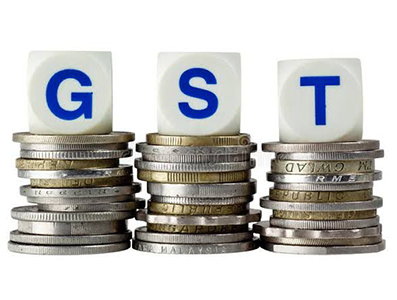
GSTIN stands for Goods and Services Tax Identification Number, and it is issued to everyone who registers for GST. It is a one-of-a-kind 15-digit identifying number. The Tax Identification Number, or TIN, has been substituted by the GSTIN, and organizations holding TINs will be automatically awarded a GSTIN, as opposed to new enterprises, which must register under the GST Act. Tax officials frequently use this number to keep track of GST payments and outstanding records for individuals enrolled under the GST Act.
Anyone who engages in the intrastate supply and goods movement with a turnover that sums up to INR20 Lakh (the threshold varies by state and might be as high as INR40 Lakh or as low as INR10 Lakh) must get and operate under GST registration. As a result, such individuals must have a thorough understanding of the paperwork necessary for GST registration. This is likewise true for everyone participating in interstate supply (no threshold limitations here).
The GST regime offers companies a single platform for all compliance and administrative procedures, which are controlled by a single agency. The regime assigns a single number – the Goods and Services Tax Identification Number – to a single firm, as opposed to many IDs for VAT, Tax, Service Tax, and so on. The GSTIN is available to the general public.
Also Read: All About GST, GST Full Form & Meaning, Types Of GST In India – What Is CGST, SGST, And IGST?
What is GST?
In India, the Goods and Services Tax (GST) is an indirect tax paid on the sale of goods and services. With the exception of a few state taxes, GST has absorbed all other indirect state and national taxes. As a result, it is a multi-staged and comprehensive tax. It replaced the prior policy of origin taxes with a policy of destination or consumption taxation. It is levied at each stage of production since it is a multi-stage tax, but it is reimbursed to all parties engaged in production except the ultimate consumer.
The money generated by an intrastate business transaction is split 50/50 between the center and the state. For example, if the state of Uttarakhand collects taxes, the state keeps half of the money and sends the other half to the federal government.
GST legislation allows the state to import goods or services in order to collect the tax in any interstate transaction involving the transportation of commodities and services across state boundaries. Consider another example: goods are exchanged between Sikkim and Assam in an interstate transaction. Assam is the state in this scenario that gets the commodities and collects the taxes, which are subsequently distributed evenly between the center and the state.
Also Read: All You Need To Know About GST Amendment Process
Documents required for GSTIN registration
- PAN card for the corporation (only in case of company)
- Corporate Affairs Ministry Certificate of Incorporation / Proof of Corporate Structure Articles of Association / Memorandum of Association (only in case of company)
- PAN card and Aadhaar card of the authorized signatory Even if a foreign firm or branch is registered in India, the authorized signature must be a resident of India.
- All directors of the company must have a PAN card and evidence of address (partners in case of firm)
- Photographs are taken of all directors and authorized signatures (Maximum size 100 kb in JPEG format)
- Board resolution naming an authorized signature / Any other proof of appointment of an authorized signatory (JPEG/PDF format, maximum size 100 kb)
- Photographs are taken of all directors and authorized signatures (Maximum size 100 kb in JPEG format)
- Board resolution naming an authorized signature / Any other proof of appointment of an authorized signatory (JPEG/PDF format, maximum size 100 kb)
- Bank account details
- Address proof of your place of business
Also Read: The Ultimate Guide With GST Search
Structure of GSTIN
GSTIN has a very unique structure and is formed out of several parts of the documents you served while registering for GST :
- The first two characters of a GSTIN indicate the individual’s state code as it is registered under the GST Act. Each state has its own code, and the first two numbers of the GSTIN are allocated accordingly.
- It is abbreviated as a “Permanent Account Number” (PAN). A person who pays GST under the GST Act’s PAN is the ten numbers after the state code, which correspond to the third to twelfth characters of a GSTIN.
- The digit at 13th place of the GSTIN is the entity or registration number of the person whose PAN number is preceded by GSTIN, i.e., the person who pays GST Act taxes. The amount is based on the number of registrations in the taxpayer’s state of residence.
- For all persons registered under the GST Act, the 14th or penultimate digit in the GSTIN is always the letter “Z.”
- The GSTIN’s last digit is a check code, which might be an alphabet or a number.
Also Read: How To Track GST Registration Status
How to verify and check GSTIN online?
The GSTIN is included on the GST certificate that a taxpayer obtains after registering under the GST Act. You may validate the GSTIN number by entering it into the government portal. GSTIN information is available to the public and, hence, easily verified through the government portal.
You may also get your GSTIN by entering your PAN number into the government’s website.
Also Read: Process For Online Registration For GST
Conclusion
GSTIN might be used by vendors to scam customers. As a result, it is advisable to verify and validate GSTIN in order to avoid GSTIN manipulation and misuse. Furthermore, GSTIN helps to guarantee that legitimate GST Returns are filed for the appropriate tax period and to promote transparency in corporate transactions. GSTIN verification is also beneficial since Input Tax Credit may be claimed when the correct GSTIN is utilized.
